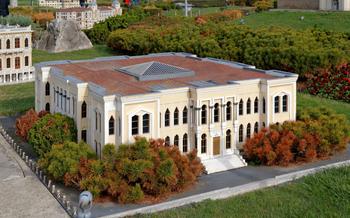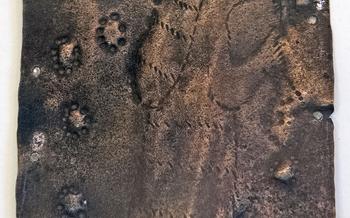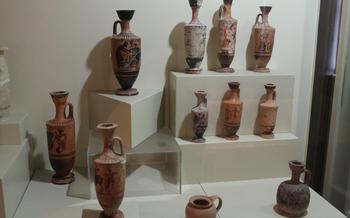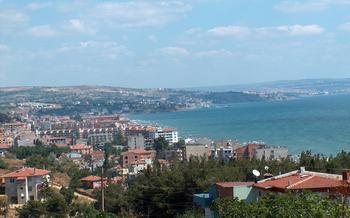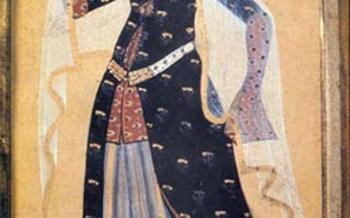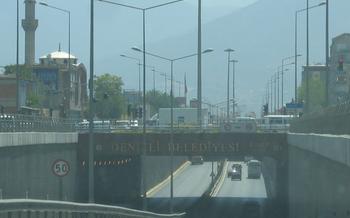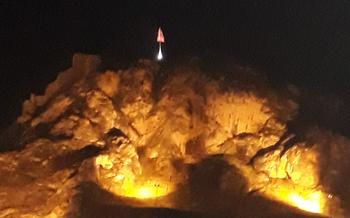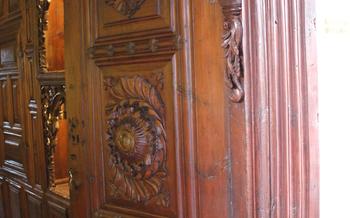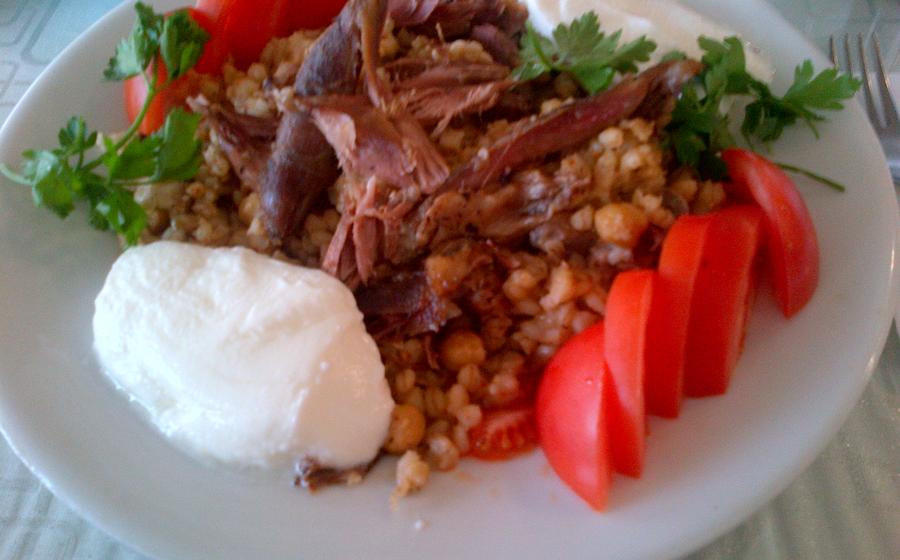
Eski Saray (Old Palace)
- A Monument to Tokat's Past:
- Stepping into the Past
- Exploring the Grounds
- A Journey Through Time
- Preserving History
- A Haven for History Buffs
- Unraveling the Palace's Secrets
- A Glimpse into Local Culture
- A Treasure Trove of Artifacts
- A Photographer's Paradise
- A Family-Friendly Destination
- Accessibility and Visitor Information
- Insider Tip: Unveiling the Hidden Charms of Eski Saray
A Monument to Tokat's Past:
The Eski Saray, or Old Palace, stands as a testament to Tokat's rich and storied past. Built in the 13th century, this architectural marvel is a symbol of the city's enduring heritage and a reminder of the grandeur of bygone eras. Its striking presence evokes a sense of awe and wonder, beckoning visitors to step into the annals of history and explore the tales held within its ancient walls.
The Eski Saray showcases a unique blend of architectural styles, reflecting the diverse influences that have shaped Tokat's history. From the intricate Islamic motifs adorning its facade to the Seljuk-inspired arches and domes, each element of the palace's design tells a story of cultural fusion and artistic prowess. As you wander through the palace complex, you'll be captivated by the harmony of architectural elements, each contributing to the overall grandeur and magnificence of the Eski Saray.
More than just a physical structure, the Eski Saray embodies the spirit of Tokat, embodying the city's resilience, cultural diversity, and unwavering connection to its past. It stands as a proud symbol of Tokat's identity, a beacon of heritage that continues to inspire and captivate visitors from all walks of life.
Stepping into the Past
The Eski Saray's origins can be traced back to the 14th century, when it was constructed during the reign of the Mengujekid dynasty. Initially serving as a residence for the local governors, it later became the administrative center of the region under the Ottoman Empire. Over the centuries, the palace witnessed numerous historical events, including the rise and fall of empires, political struggles, and cultural exchanges.
Throughout its existence, the Eski Saray underwent several renovations and expansions, reflecting the changing needs and tastes of its occupants. Each period left its mark on the palace's architecture and design, creating a fascinating blend of styles. From the intricate tilework of the Seljuk era to the grand arches and domes of the Ottoman period, the palace stands as a testament to Tokat's rich and diverse history.
Legends and stories abound about the Eski Saray, adding to its mystique and allure. One tale speaks of a hidden treasure buried beneath the palace grounds, guarded by ancient spirits. Another recounts the tale of a star-crossed love between a prince and a commoner, whose secret rendezvous took place within the palace walls. These stories, passed down through generations, have woven themselves into the fabric of the palace's history, capturing the imagination of visitors and locals alike.
Exploring the Grounds
The Eski Saray complex is an architectural masterpiece that showcases the grandeur and intricate craftsmanship of the past. As you step through its gates, you will be greeted by a spacious courtyard, adorned with a mesmerizing fountain that creates a tranquil ambiance. The courtyard leads to a series of chambers and halls, each with its own unique character and purpose.
Among the highlights of the palace are its beautifully landscaped gardens, which offer a serene escape from the bustling city. Stroll through the gardens and admire the vibrant colors of the flowers, the fragrant scents of the herbs, and the calming sound of the water features. Take a moment to relax in one of the many seating areas, where you can soak in the tranquility and appreciate the beauty of your surroundings.
The palace also boasts several impressive architectural features, including intricate carvings, stunning tilework, and elegant arches. Pay attention to the details as you explore the different rooms, and you will discover hidden gems that reveal the artistry and craftsmanship of the builders. The Eski Saray is a true testament to the architectural prowess of its time, and its grandeur continues to inspire awe in visitors to this day.
A Journey Through Time
The Eski Saray has undergone several transformations throughout history, reflecting the changing political and social landscape of Tokat. Originally built as a residence for the rulers of the city, it served as a center of power and administration. During the Ottoman period, the palace was expanded and renovated to accommodate the growing needs of the empire. It became a hub for government activities, with officials and dignitaries conducting their affairs within its walls.
In the 19th century, the palace underwent a significant transformation when it was converted into a prison. This change marked a stark contrast to its previous role as a seat of power. The once-grand halls and chambers were repurposed to hold prisoners, and the palace took on a new, somber character.
In the 20th century, the Eski Saray was finally recognized for its historical and architectural significance. It was restored and converted into a museum, preserving its legacy and opening its doors to the public. Today, the palace stands as a testament to Tokat's rich history, showcasing the different eras and events that have shaped the city.
Preserving History
The Eski Saray stands as a testament to the enduring legacy of Tokat's rich past. Preserving and restoring such historical sites is of paramount importance, as they serve as tangible links to our heritage and provide valuable insights into the lives of our ancestors. The conservation efforts undertaken at the Eski Saray are commendable, ensuring that this architectural gem remains a source of pride and inspiration for generations to come. However, maintaining the palace's integrity poses several challenges, including the need for specialized expertise, the availability of funding, and the impact of environmental factors. Despite these challenges, the dedication of local authorities and organizations to preserving the Eski Saray is a testament to their commitment to safeguarding the city's cultural heritage.
A Haven for History Buffs
For history enthusiasts, the Eski Saray is a treasure trove of knowledge and inspiration. It offers a tangible connection to Tokat's rich past, providing insights into the city's evolution, culture, and way of life. Walking through the palace grounds is like embarking on a journey through time, where each corner holds a story waiting to be uncovered.
The palace's architectural details, artifacts, and exhibits provide a glimpse into the lives of Tokat's former rulers, their customs, and their contributions to the region. Visitors can learn about the city's role in trade, governance, and cultural exchange, gaining a deeper appreciation for the diverse influences that have shaped Tokat over the centuries.
Whether you're a history buff, an architecture enthusiast, or simply someone curious about the past, the Eski Saray promises an unforgettable journey into the heart of Tokat's heritage.
Unraveling the Palace's Secrets
To fully immerse yourself in the history and significance of the Eski Saray, guided tours are a must. Knowledgeable guides will lead you through the palace grounds, sharing captivating stories and anecdotes that bring the palace's past to life. Audio guides are also available for those who prefer a self-paced exploration.
The Eski Saray also hosts thematic exhibitions and educational programs throughout the year. These exhibitions delve into specific aspects of the palace's history, art, and architecture, offering visitors a deeper understanding of its significance. Educational programs, including lectures, workshops, and interactive activities, provide a platform for visitors to engage with experts and gain insights into the palace's rich heritage.
For researchers and scholars, the Eski Saray offers a treasure trove of opportunities. Access to the palace's archives, libraries, and collections allows them to conduct in-depth research on various aspects of its history and significance. The palace also collaborates with universities and research institutions, facilitating collaborative projects and fostering a vibrant academic community.
A Glimpse into Local Culture
The Eski Saray is not just a historical monument but also a vibrant cultural hub. It serves as a venue for various cultural events, performances, and exhibitions that showcase Tokat's rich heritage. Visitors can experience traditional crafts demonstrations, where artisans display their skills in pottery, weaving, and metalworking. These workshops provide a unique opportunity to interact with local craftsmen, learn about their techniques, and appreciate the intricate details of their work. The palace also hosts cultural performances, such as traditional music concerts, dance shows, and storytelling sessions, which offer a glimpse into the vibrant artistic traditions of the region.
A Treasure Trove of Artifacts
The Eski Saray houses a museum section that showcases a diverse collection of historical artifacts, providing visitors with a glimpse into Tokat's rich cultural heritage. These exhibits include intricate textiles, finely crafted ceramics, and ancient manuscripts that tell the story of the region's past.
Among the most notable artifacts are traditional garments adorned with colorful embroidery, reflecting the skill and artistry of local artisans. Visitors can also admire an array of ceramic pieces, from delicate pottery to elaborate tiles, showcasing the region's renowned craftsmanship.
The collection also includes a treasure trove of manuscripts, including illuminated Qur'ans and historical documents that shed light on Tokat's literary and intellectual heritage. These precious artifacts offer valuable insights into the region's religious, cultural, and political history.
By exploring the museum section of the Eski Saray, visitors can gain a deeper understanding of Tokat's rich cultural heritage and the diverse influences that have shaped its identity over the centuries. The museum serves as a treasure trove of artifacts that bring the region's past to life and provide a tangible connection to its vibrant history.
A Photographer's Paradise
The Eski Saray, with its picturesque architecture and stunning surroundings, presents a photographer's paradise, offering ample opportunities to capture captivating images. Every corner of the palace is adorned with intricate details, from the majestic arches and domes to the delicate carvings and tilework. The play of light and shadow creates dramatic effects, especially during the golden hours of sunrise and sunset, casting a warm glow on the ancient stone. Whether you're a professional photographer or simply an enthusiast with a keen eye for composition, the Eski Saray promises a rewarding experience.
Tips for Capturing the Best Shots:
-
Wide-Angle Wonders: Utilize a wide-angle lens to capture the grandeur of the palace's architecture, ensuring you include the sweeping courtyards, towering minarets, and sprawling gardens in your frame.
-
Close-Up Charm: Don't miss the intricate details and textures that adorn the palace walls, doorways, and windows. Get up close and personal with your macro lens to reveal the hidden beauty in the carvings, tilework, and decorative elements.
-
Play with Perspectives: Experiment with different angles and perspectives to create dynamic compositions. Shoot from above, below, or even through doorways and arches to add depth and interest to your photographs.
-
Golden Hour Glow: Plan your visit during the golden hours of sunrise or sunset to capture the palace bathed in a warm and ethereal light. This soft, diffused light will enhance the colors and textures of the architecture, creating a magical atmosphere in your images.
-
Storytelling Through Shadows: Embrace the interplay of light and shadow to tell a story. Shadows can add drama, depth, and mystery to your photographs, highlighting architectural features and creating intriguing compositions.
A Family-Friendly Destination
The Eski Saray, with its engaging exhibits and educational programs, caters to visitors of all ages, especially families. Interactive displays and storytelling sessions bring history to life for young minds, making learning a fun and memorable experience. Children can embark on a journey through time, discovering the stories and legends that shaped Tokat's past. The spacious courtyards and gardens provide ample space for kids to run, play, and explore, creating lasting memories in this historical setting.
To ensure a fulfilling visit for families, consider planning your trip during the palace's family-themed events or workshops. These events often feature hands-on activities, traditional games, and performances that engage children and adults alike. Remember to check the Eski Saray's website or contact the visitor center for information on upcoming family-friendly programs.
Here's a tip for parents: to make the most of your visit, involve your children in the storytelling and exploration process. Encourage them to ask questions, share their thoughts, and connect the palace's history to their own lives. This interactive approach will deepen their understanding and appreciation of Tokat's rich cultural heritage.
Accessibility and Visitor Information
The Eski Saray is committed to providing a welcoming and accessible experience for all visitors. Wheelchair ramps and elevators are available throughout the palace complex, ensuring that visitors with disabilities can easily explore the grounds and exhibits.
Admission fees are nominal, and the palace is open to the public during regular hours. Guided tours are offered in multiple languages, providing visitors with in-depth insights into the history and significance of the palace. Visitors can also opt for audio guides, which offer a self-guided tour experience at their own pace.
For further inquiries, visitors can contact the Eski Saray's information desk or visit their official website. The website provides detailed information on admission fees, opening hours, guided tour schedules, and upcoming events. Visitors can also find contact details for the palace's administration and book guided tours in advance.
Insider Tip: Unveiling the Hidden Charms of Eski Saray
To fully appreciate the Eski Saray's grandeur and tranquility, plan your visit for a weekday morning. This will allow you to explore the palace grounds at your own pace, avoiding the larger crowds that tend to gather in the afternoons and on weekends. As you wander through the palace's chambers and courtyards, keep an eye out for hidden corners and lesser-known spots that offer unique perspectives. One such gem is the secluded garden located behind the main courtyard, where you can find a serene oasis amidst the bustling city.
After your exploration, indulge in the local culinary delights by venturing into the narrow streets surrounding the palace. Ask the friendly locals for recommendations on authentic restaurants serving traditional Turkish cuisine. Savor the flavors of Tokat's specialties, such as the mouthwatering "Tokat kebabı" or the aromatic "Tokat çöreği," a sweet pastry that will tantalize your taste buds. By immersing yourself in the local culture and cuisine, you'll gain a deeper appreciation for the rich heritage that Tokat embodies.
